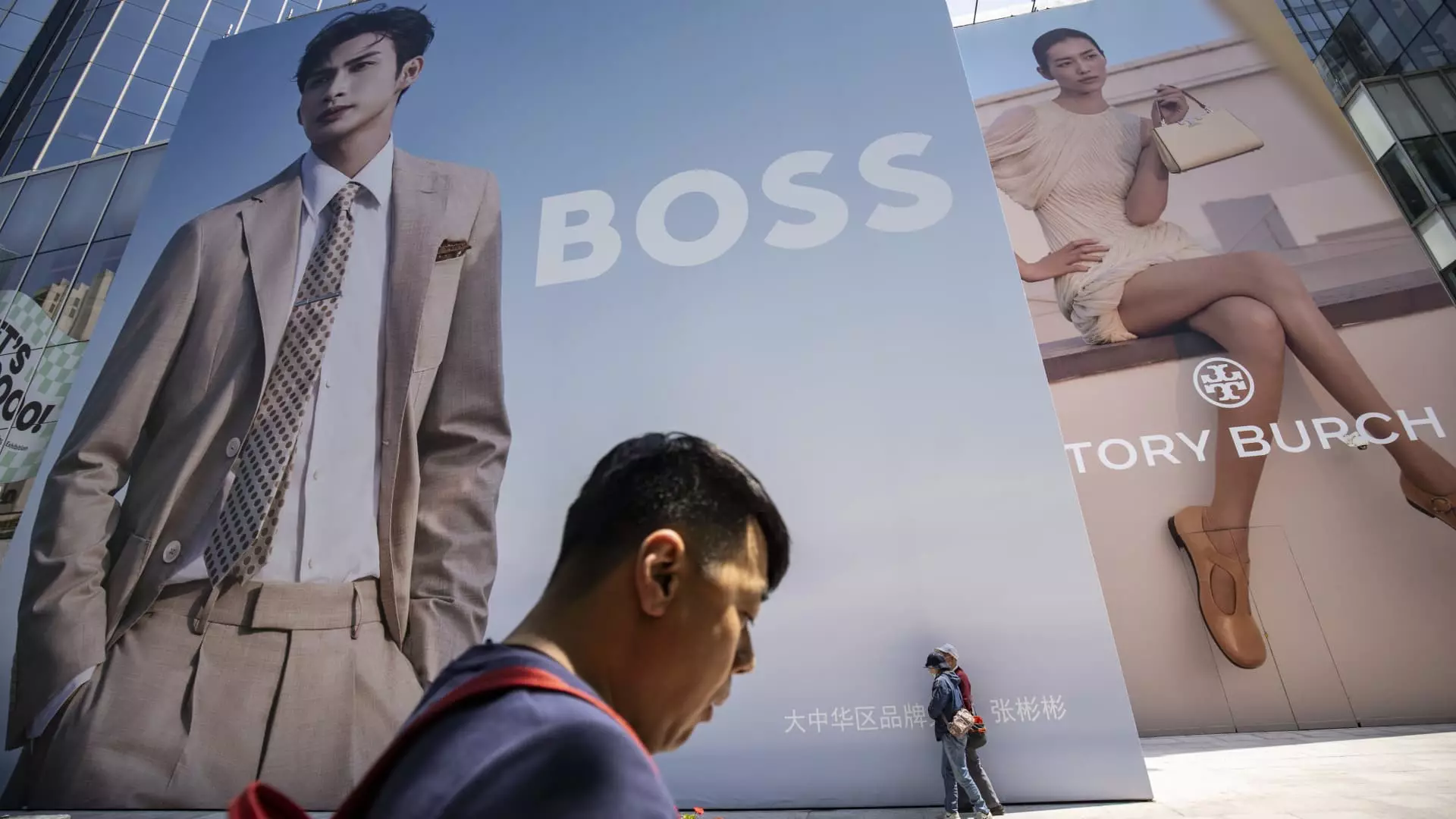European luxury stocks have experienced a noticeable downturn, reflecting growing concerns among analysts regarding consumer demand, notably from affluent Chinese markets. The luxury sector, which rebounded strongly post-Covid, now faces a more challenging environment as economic indicators suggest a diminishing appetite for high-priced goods. Analysts have pointed to several factors contributing to this troubling trend, with Bank of America Securities notably downgrading key luxury brands, sparking fears of a broader contraction in luxury spending.
One standout example is Germany’s Hugo Boss, which saw its stock plunge by 4% following the downgrade from Bank of America. The firm’s prospects for the second half of the year appear bleak, characterized by increasing discount strategies to attract consumer interest. Analysts suggest that the strong growth rates experienced in the luxury market during 2022 have been unsustainable. They note a sequential slowdown with a particularly pronounced decline in consumption from Chinese buyers, who have historically been significant contributors to luxury brand revenues.
The reliance on Chinese consumers has become a double-edged sword for the luxury sector. Following a period of explosive growth, indicators now reveal a retreat in spending from this critical demographic. In a research note, Bank of America articulated this shift, emphasizing that not only is the Chinese consumer experiencing fatigue, but other nationalities are finding themselves in similar situations. The suggestion that luxury consumers are “all shopped out” speaks volumes about the current mindset; many luxury brands may be vulnerable to a fall in aspirational purchases from individuals who previously enthusiastically sought out high-end products.
Moreover, the implications of ongoing geopolitical and macroeconomic challenges cannot be ignored. China’s slowing economy, exacerbated by troubles in its property market, appears to be fostering a climate of caution among high-net-worth individuals, who are increasingly re-evaluating their discretionary spending priorities. Such a shift has raised alarms among luxury brand stakeholders, compelling companies to reconsider expansion strategies while bracing for new market realities.
European Luxury Giants on the Defensive
Major European luxury brands are feeling the heat as consumer confidence wanes. Burberry, for instance, saw its stock drop nearly 3% after a downgrade in valuation, reflecting a broader sentiment of skepticism about high-end retail prospects. French luxury stalwarts like LVMH and Kering also encountered downward pressure, with LVMH hitting its lowest market value since July 2022. Contemporary brands are scrambling to adapt to a market in flux, as evidenced by Burberry’s recent restructuring efforts to maintain relevance among consumers whose purchasing habits have become increasingly unpredictable.
The viewpoint expressed by Jon Cox of Kepler Cheuvreux underscores heightened uncertainty within the sector, especially surrounding the prospects for branding and marketing strategies targeting younger, aspirational consumers. Given that these demographics can shift their spending habits rapidly based on trends, luxury brands that do not resonate with evolving preferences may find themselves in precarious positions.
Adding another layer of complexity to the luxury market’s challenges are the potential ramifications of international trade policies, particularly relating to China. Susannah Streeter from Hargreaves Lansdown highlighted the possibility of new tariffs being imposed on luxury goods in retaliation for the European Union’s proposed duties on Chinese electric vehicles. Such measures could disproportionately affect luxury items—often seen as non-essential luxuries in contrast to industrial goods—placing them at higher risk of becoming targets in escalating trade tensions.
This uncertainty could lead to a ripple effect, impacting not just sales figures but also brand loyalty as consumers reassess the value of high-end purchases in an increasingly complicated economic landscape. The growing trend of protectionism and nationalist sentiments could force brands to recalibrate their strategies, potentially impacting supply chains and pricing structures.
As we enter the second half of the year, the landscape for luxury brands appears laden with challenges. The luxury market, once seen as a protected haven of wealth and consumer willingness to indulge, is now grappling with secular shifts and economic pressures that cannot be ignored. With analysts predicting a modest decline in revenues across top-tier firms, it is vital for brands to become adept at navigating these turbulent waters. Long-term investments and strategic pivots may be essential in reviving not just brand relevance but also rebuilding consumer confidence among the wealthiest buyers globally.
Given the current state of the luxury market, stakeholders would be wise to adopt a more conservative approach in anticipating growth, recognizing that a prolonged period of adaptation might be necessary before the sector sees a resurgence. As the luxury market continues to evolve, how brands respond will be crucial in determining their long-term viability and success.


Leave a Reply